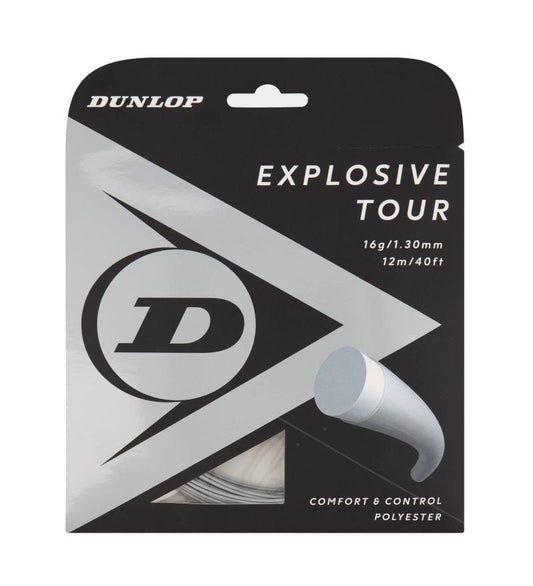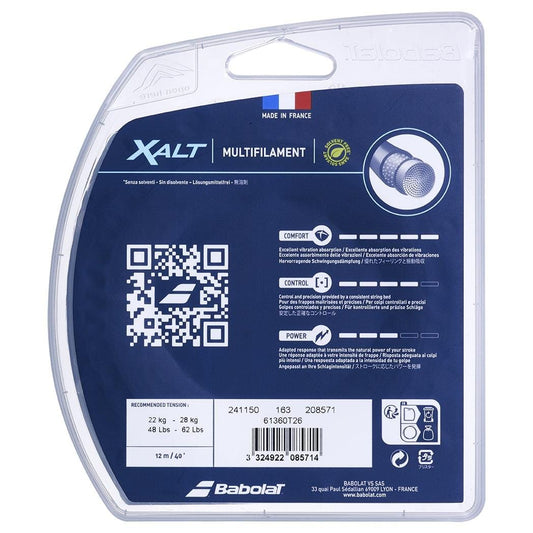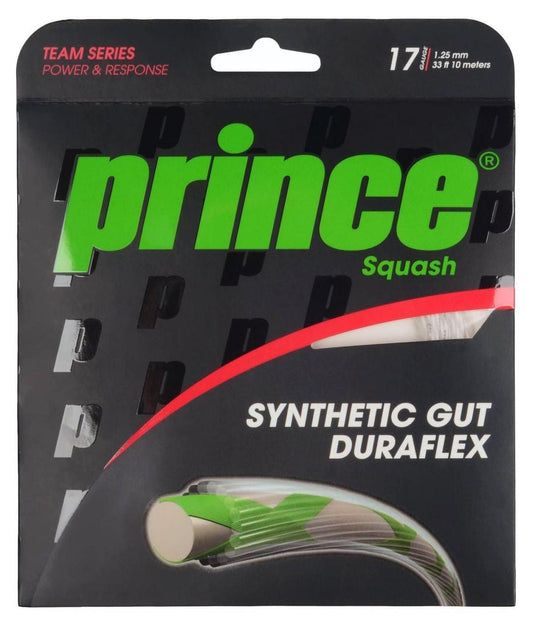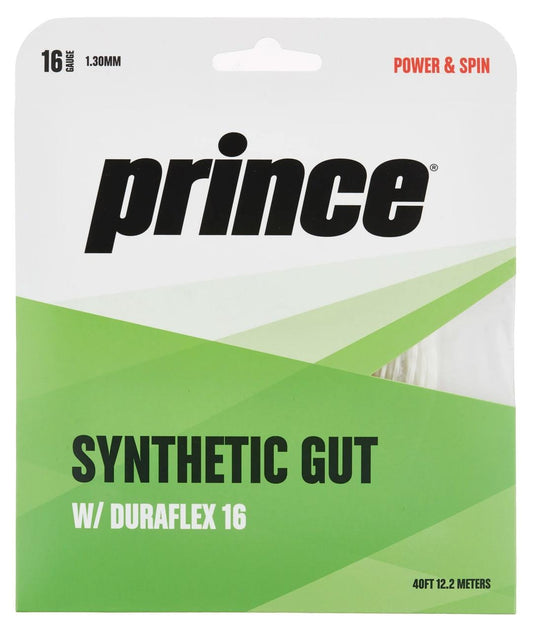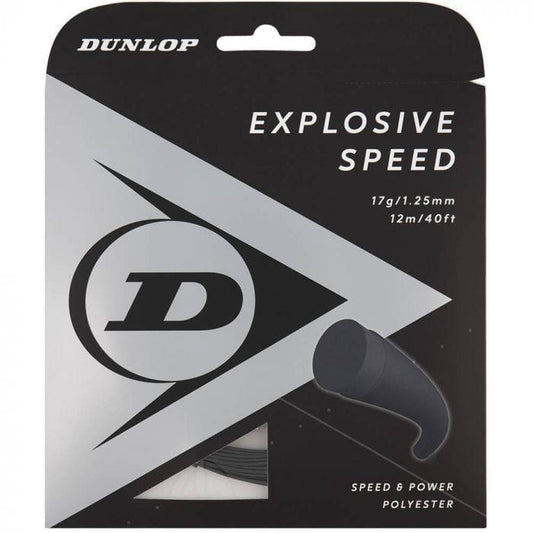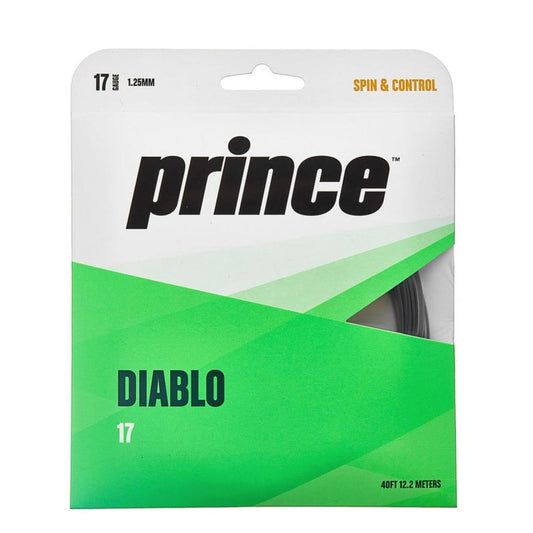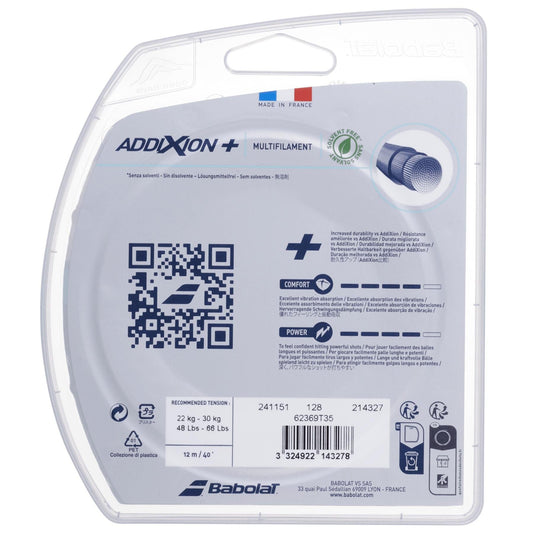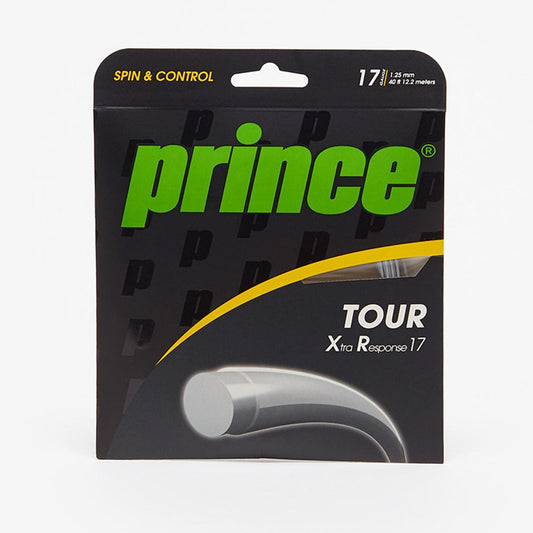Collection: Tennis Strings
Whilst many people focus mainly on their tennis rackets, tennis strings are an often overlooked but essential component of a tennis player's arsenal, playing a crucial role in the overall performance and feel of a racket. Whether you're a recreational player or a seasoned professional, understanding the different types of tennis strings and their characteristics is vital for optimizing your game. In this guide, we will explore the world of tennis strings, their construction, materials, and provide valuable insights into choosing the right strings for your playing style.
The importance of tennis strings:
Tennis strings are the lifeline of a racket, connecting the player's power and control to the ball. They play a significant role in dictating the feel, spin, power, and durability of each shot. The type of strings you choose can have a profound impact on your game, allowing you to maximize your strengths and compensate for weaknesses.
Types of tennis racket string:
- Natural Gut Strings: Considered the gold standard in terms of playability, natural gut strings are made from cow or sheep intestines. They offer exceptional comfort, power, and feel, making them a popular choice among professional players. However, they tend to be expensive and less durable compared to other string materials. Babolat Touch VS Natural Gut is the most popular natural gut string available at TennisHQ and is available in singular tennis string sets.
- Synthetic Gut Strings: Synthetic gut strings are made from nylon or other synthetic materials. They provide a good balance of playability, durability, and affordability, making them a popular choice for recreational players. Synthetic gut strings offer decent power, control, and comfort. Our best selling syn gut string is the Prince Synthetic Gut Duraflex.
- Polyester Strings: Polyester strings, also known as monofilament strings, are made from a single strand of polyester material. They offer excellent durability, control, and spin potential. Polyester strings are commonly used by players who generate their own power and prefer a firmer and more controlled feel. Whilst polyester strings do not provide great comfort, this can be helped with the addition of tennis dampeners. Our best selling polyester string is the Babolat RPM Blast tennis string which is built for optimum spin.
- Multifilament Strings: Multifilament strings are made up of multiple strands of synthetic fibres. They aim to mimic the playability of natural gut strings while providing better durability. Multifilament strings offer a softer feel, increased power, and enhanced comfort. They are a popular choice for players seeking a blend of performance and comfort.
How do I choose the right tennis strings?
- Playing Style: Your playing style and preferences should influence your choice of tennis strings. If you are a power player, polyester strings may provide the control and durability you need. For players who prioritize comfort and feel, natural gut or multifilament strings might be more suitable.
- String Gauge: String gauge refers to the thickness of the string. Thicker strings offer durability and control but sacrifice some power and spin potential. Thinner strings provide more power, spin, and feel but tend to be less durable. Consider your playing style and the trade-offs between power and control when selecting the appropriate string gauge.
- Tension: String tension refers to the tightness of the strings. Higher tension offers more control but reduces power and comfort. Lower tension provides more power and comfort but may sacrifice some control. Experimenting with different string tensions can help you find the sweet spot that suits your game.
- Durability: String durability is a crucial factor, especially for players who break strings frequently. Polyester strings are known for their durability, while natural gut strings are more susceptible to breaking. Consider your budget and frequency of restringing when evaluating the durability of different string materials.
Tennis string maintenance:
Tennis strings require regular maintenance to ensure optimal performance and longevity. Here are some tips to keep your strings in top condition:
- Avoid excessive exposure to moisture, extreme temperatures, and direct sunlight, as these can degrade the string material.
- Regularly inspect your strings for signs of wear, fraying, or tension loss. Replace them as needed to maintain consistent performance.
- A general rule is to make sure your racket is restrung at least as many times in a year as you play in a week. For high performance tournament players, consider restringing your racket every 10-20 hours of play or when you notice a significant decrease in performance.
If you're unsure about which tennis strings to choose, seeking advice from a professional stringer or tennis coach can be invaluable. They can assess your playing style, analyse your needs, and recommend the most suitable strings for you. If you are in need of further advice then please feel free to call us at TennisHQ and we will be happy to help.
Final thoughts:
Tennis strings are a vital aspect of your tennis equipment, directly impacting your power, control, comfort, and overall playing experience. Choosing the right tennis strings requires consideration of factors such as string type, gauge, tension, and durability. Experimentation and seeking professional advice can help you find the strings that complement your playing style and elevate your performance on the court. Invest in high-quality tennis strings, maintain them properly, and unlock your true potential on the tennis court.
-
Babolat RPM Blast Tennis String (12m) - Black
Save 37% JANUARY SALERegular price £11.95Regular priceUnit price / per£19.00Sale price £11.95Sale -
Babolat XCEL Tennis String (12m) - Natural
Save 43% JANUARY SALERegular price £11.50Regular priceUnit price / per£20.00Sale price £11.50Sale -
Babolat XCEL Tennis String (12m) - Blue
Save 45% JANUARY SALERegular price £10.99Regular priceUnit price / per£20.00Sale price £10.99Sale -
 JAN SALE Save 41%
JAN SALE Save 41%HEAD Lynx Tour Tennis String Set - Orange
Save 41% JANUARY SALERegular price £7.99Regular priceUnit price / per£13.50Sale price £7.99Sale -
Dunlop Explosive Tour Tennis String 12m Set - Grey
Save 72% JANUARY SALERegular price From £4.45Regular priceUnit price / per£16.00Sale price From £4.45Sale -
 JAN SALE Save 41%
JAN SALE Save 41%HEAD Lynx Tour Tennis String Set - Black
Save 41% JANUARY SALERegular price £7.99Regular priceUnit price / per£13.50Sale price £7.99Sale -
Babolat XCEL Tennis String (12m) - Black
Save 43% JANUARY SALERegular price £11.50Regular priceUnit price / per£20.00Sale price £11.50Sale -
Babolat RPM Power Tennis String (12m) - Electric Blue
Save 56% JANUARY SALERegular price £7.95Regular priceUnit price / per£18.00Sale price £7.95Sale -
Yonex Polytour Fire Tennis String (12m) - Red
Save 50% JANUARY SALERegular price £9.95Regular priceUnit price / per£20.00Sale price £9.95Sale -
Babolat XALT Tennis String (12m) - White Spiral
Save 20%Regular price £17.60Regular priceUnit price / per£21.99Sale price £17.60Sale -
HEAD Hawk Power 12m String Set - Petrol
Save 20%Regular price £14.40Regular priceUnit price / per£18.00Sale price £14.40Sale -
Babolat RPM Team Tennis String (12m) - Black
Save 41% JANUARY SALERegular price £9.95Regular priceUnit price / per£17.00Sale price £9.95Sale -
Tecnifibre X-One Biphase 12m Tennis String Set - Natural
Save 11% JANUARY SALERegular price £23.99Regular priceUnit price / per£27.00Sale price £23.99Sale -
Tecnifibre X-One Biphase Tennis String Set - Red
Save 33% JANUARY SALERegular price £17.99Regular priceUnit price / per£27.00Sale price £17.99Sale -
 JAN SALE Save 41%
JAN SALE Save 41%HEAD Lynx Tour Tennis String Set - Grey
Save 41% JANUARY SALERegular price £7.99Regular priceUnit price / per£13.50Sale price £7.99Sale -
 Save 20%
Save 20%Yonex Stencil Ink - White
Save 20%Regular price £10.40Regular priceUnit price / per£13.00Sale price £10.40Sale -
HEAD Lynx Tour Tennis String Set - Champagne
Regular price £13.50Regular priceUnit price / per£13.50Sale price £13.50 -
Volkl Cyclone Tennis String Set - Black (12m)
Save 10%Regular price £8.55Regular priceUnit price / per£9.50Sale price £8.55Sale -
Prince Diablo Black String Set
Save 46% JANUARY SALERegular price £6.99Regular priceUnit price / per£12.99Sale price £6.99Sale -
Babolat XCEL Tennis String (12m) - Red
Save 45% JANUARY SALERegular price £10.99Regular priceUnit price / per£20.00Sale price £10.99Sale -
Babolat RPM Power Tennis String (12m) - Electric Brown
Save 39% JANUARY SALERegular price £10.90Regular priceUnit price / per£18.00Sale price £10.90Sale -
Volkl Cyclone Tour Tennis String Set - Red (12m)
Save 10%Regular price £8.55Regular priceUnit price / per£9.50Sale price £8.55Sale -
Volkl Cyclone Tennis String Set - Yellow (12m)
Save 10%Regular price £8.55Regular priceUnit price / per£9.50Sale price £8.55Sale -
Prince Tour XR Silver String Set
Regular price £6.00Regular priceUnit price / per -
Tecnifibre Razor Code ATP Tennis String Set - Blue
Save 17%Regular price £14.99Regular priceUnit price / per£18.00Sale price £14.99Sale -
Babolat RPM Hurricane Tennis String (12m) - White
Save 20%Regular price £11.60Regular priceUnit price / per£14.50Sale price £11.60Sale -
HEAD Lynx Tennis String Set - Blue
Regular price £13.50Regular priceUnit price / per£13.50Sale price £13.50




